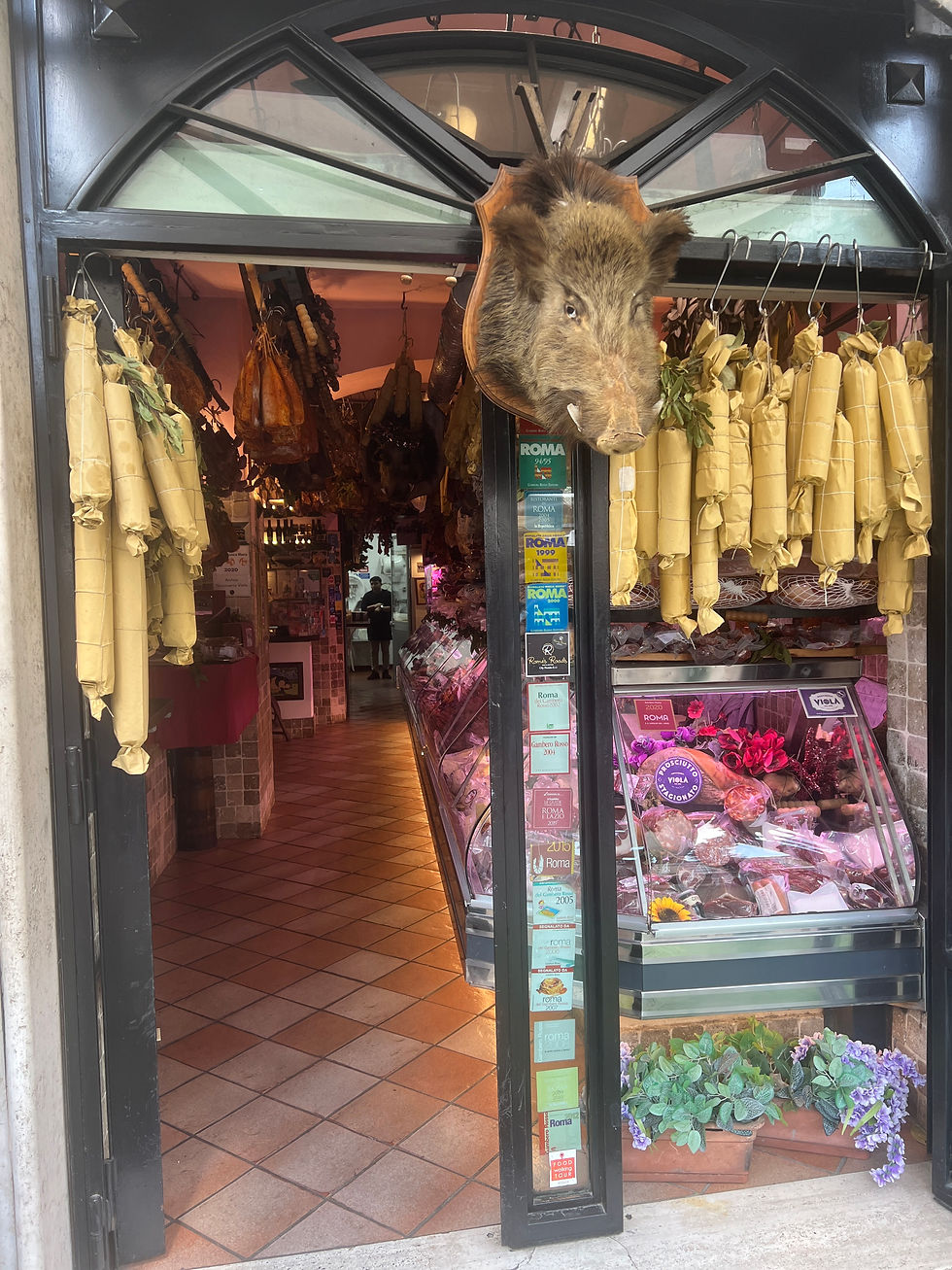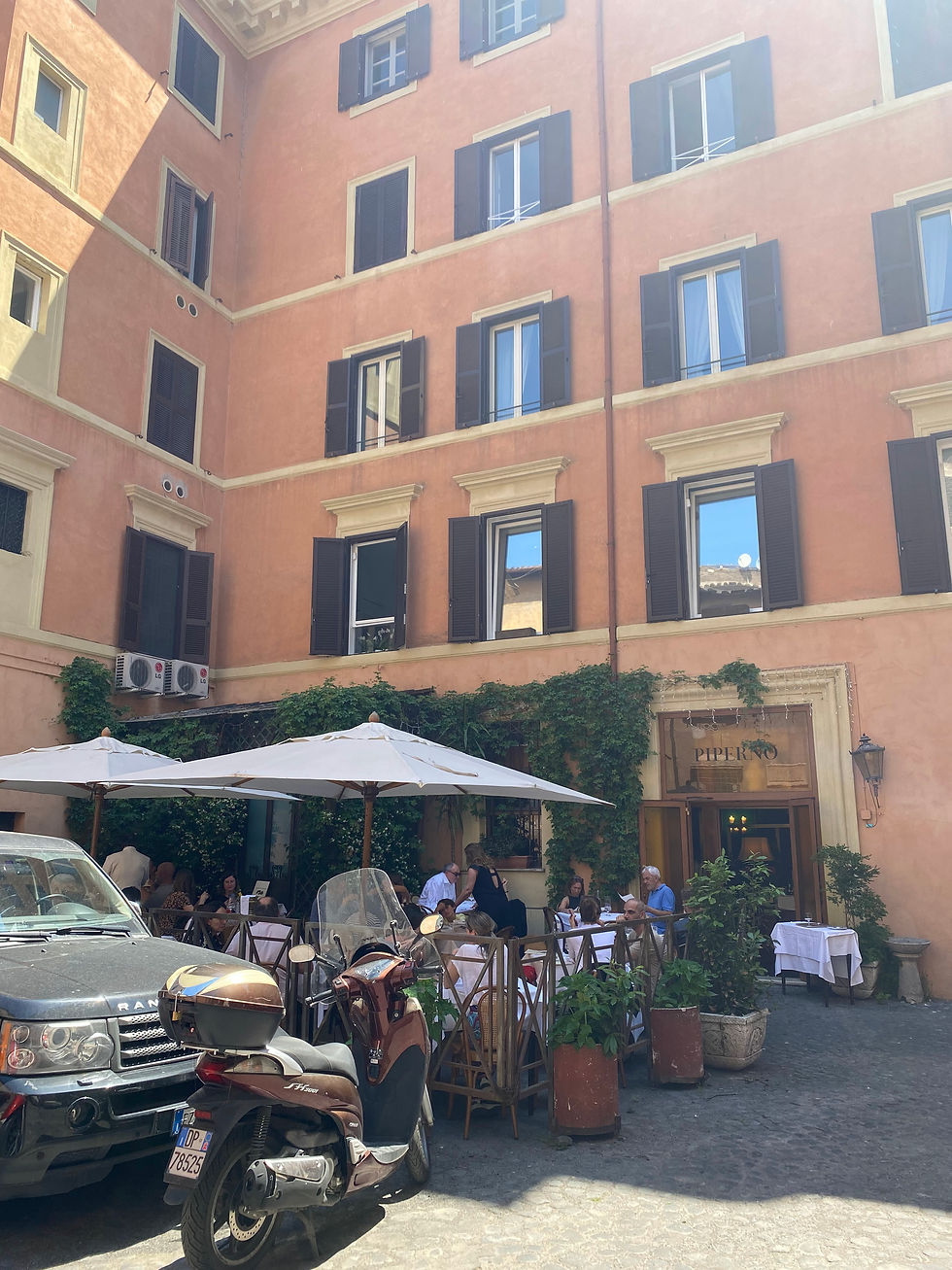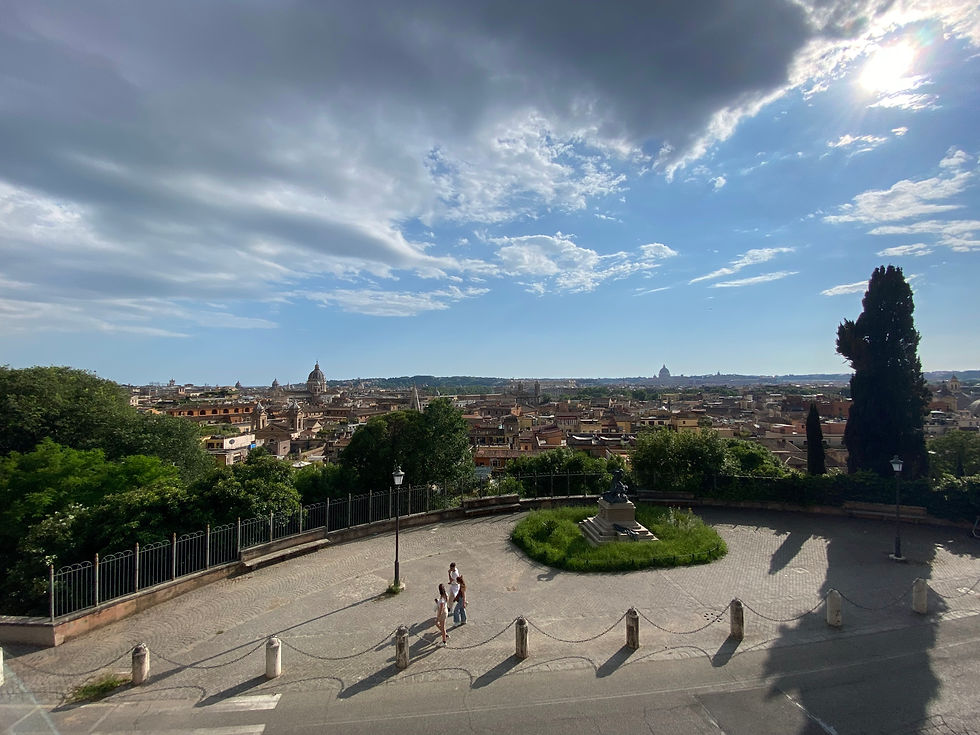A Local's Guide to Rome: Neighborhood Food, Streets & Culture
- Will Gerson
- Aug 23
- 4 min read
Updated: Nov 22
Rome, the Eternal City, is one of the world’s premier tourist destinations. With a history spanning nearly three thousand years, this incredible place has something remarkable around every corner. Its sights—the Colosseum, the Vatican, the Trevi Fountain, the Pantheon—are known the world over.

But Rome is more than just ancient monuments. There is another city here, hiding in plain sight, that is often overlooked by the tourists who come for the ticketed attractions. This local’s guide will help you to, as the saying goes, do as the (modern) Romans do.

Via Giulia
This street, arguably the city’s most picturesque, was one of the main arteries of Renaissance Rome. Commissioned in the early 16th century by Pope Julius II, Via Giulia was to serve as a major road for the city, in contrast to the network of narrow alleys that constituted medieval Rome, as well as to reflect the wealth and power of the Catholic Church through the grand buildings that lined it.

Today, the street is charming in its serenity, home to elegant palaces but without the bustle of other streets in the city center. Close by, on the parallel street Via dei Banchi Vecchi, check out Cuoi e Pelli, a high-quality, family-owned leather goods store in business since 1937. For a bite to eat, try Supplizio down the street, where you can try typical Roman street foods like the famous supplì, delicious fried rice balls filled with mozzarella. And, for something sweet, visit Frigidarium a few blocks away for artisanal gelato.
Campo de’ Fiori
This piazza is famous for its large, open-air market, in operation since the 19th century, where the stalls are overflowing with fresh produce as well as fragrant flowers and herbs. You will see plenty of locals here doing their weekly shopping as well as tourists who have come for a window into Roman daily life.
After exploring the market, stop for a sandwich at Norcineria Viola, a fantastic shop right on the square selling first-rate meats and cheeses since 1890.

Ghetto di Roma
Make your way through the Porticus Octaviae, behind the Theatre of Marcellus, and you will enter Rome’s old Jewish ghetto. Jews have been in Rome since at least the 2nd century BC, but, beginning by papal decree in 1555, they were confined to this area for three centuries, which was walled off from the rest of the city with its gates locked at night.

Today, the area’s charming, quiet streets belie its past as a place where Jews were forced to live in poverty and stripped of many of their rights. The neighborhood is also home to a rich culinary tradition, with some of Rome’s most famous dishes having originated in the city’s Jewish community, like carciofi alla giudìa (fried artichokes) and fiori di zucca ripieni (fried squash blossoms stuffed with mozzarella and anchovies). For an unforgettable meal, get a table on the lovely patio of Ristorante Piperno.

Via dei Serpenti
A few blocks north of the Colosseum, this lively street is full of restaurants and bars frequented by locals and tourists alike. For a real neighborhood spot, have dinner at Le Tavernelle, and go for a pre- or post-dinner drink across the street at Ai Tre Scalini, a bottiglieria in operation since 1895. Farther down the street, you have a couple of great lunch options with al42 for pasta and Fuorinorma for panini. Try a drink (or a pastry) at La Licata, a local favorite since the 1980s.

Coffee by the Pantheon
Two of Rome’s oldest cafes are located just steps away from the Pantheon: Sant’Eustachio il Caffè (1938) and La Casa del Caffè Tazza d’Oro (1944). Both are well worth a visit for their vintage interiors as well as their coffee. Following the mantra of doing as the Romans do, be sure not to commit an Italian coffee faux pas: cappuccino, considered a breakfast drink, is typically ordered before 11am, while afternoon coffees are strictly espresso or macchiato.

Via del Corso
This street cuts through the heart of Rome’s historic center and is well-known as a place for high-end shopping. This is also a classic spot for the passeggiata, the leisurely evening stroll that is a time for conversation and people-watching.

You can enjoy a passeggiata after a dinner at Matricianella, where I recommend a traditional Roman pasta dish like bucatini alla amatriciana, cacio e pepe, or spaghetti alla carbonara. For dessert, make a slight detour to Giolitti, Rome’s most famous gelateria.

Basilica di Santa Maria del Popolo
This church, on the northern side of the bustling Piazza del Popolo, dates from the late 15th century. Its rather humble exterior belies the artistic treasures held within, as the church contains an impressive collection of works by the grand masters Raphael and Caravaggio, among others. The Piazza del Popolo was the entry point to Rome from the Via Flaminia, the main road leading out of the city in olden times, meaning that this basilica was the first church a traveler would encounter in Rome.

After exploring the church, you can exit the piazza and make your way up Pincian Hill to explore the gardens of Villa Borghese and enjoy beautiful views overlooking the city.

Looking for more places to explore? Visit our Italy page here.



